Ruinas del Monasterio de San Francisco / Ruins of the San Francisco Monastery and the Capilla de la Tercera Orden Franciscana / Chapel of the Franciscan Third Order
Sitting atop a hill, looming, surrounded by an iron fence sits almost 2 blocks of buildings in ruins and a UNESCO World Heritage Site. The Ruinas del Monasterio de San Francisco / Ruins of the San Francisco Monastery are a very humbling sight to behold. Looking both majestic and eerie. It’s menacing, eerie feeling is multiplied when you walk close and see the holes in the land surrounding the building. Some say that these were to hold prisoners. While others say they are places where excavations were done.

First Monastery | La Casa del Diablo | Capilla de la Tercera Orden Franciscana | Location | A Picture Collection of the Ruins

There is also a deep well on site covered by a grate.
In the past the inhabitants were lunatics and friars, now the sole inhabitants of the building are the pigeons and ghosts. The cooing of the birds, or maybe it be the moaning from the people of the past, add to the eerie feel of the place.
In the evening the ruins seem to heighten in magnitude and mysteriousness. The lights shining on these abandoned and falling stone walls give it an immense forlorn and desolate feeling. Make sure when you visit you sit on the steps and take in the feeling of the place. If only these lonely bricks could tell their story.
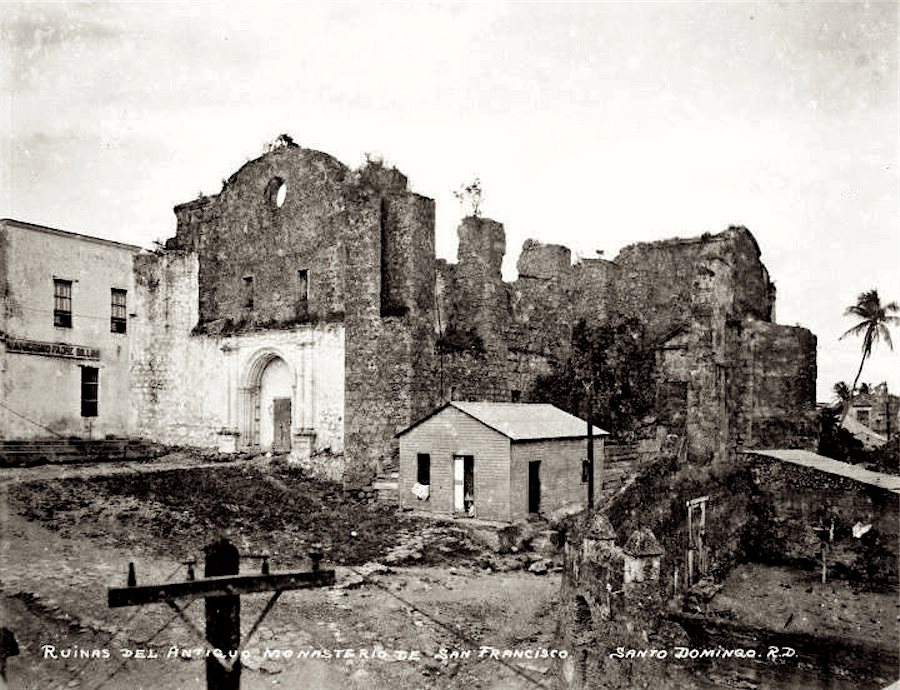
The First Monastery
The most important ruins of the Americas held the first monastery in the Americas. The building was started by Nicolás de Ovando in 1509 and was completed in 1560. Built on a hill overlooking the city it was, and is, a true marvel. It was divided into three parts, the Convento/ Convent, the Chapel (Capilla de la Tercera Orden de los Franciscano, the Capilla de Garay also known as the Chapel of Maria de Toledo, Diego Colons’ wife), and San Francisco el Viejo.
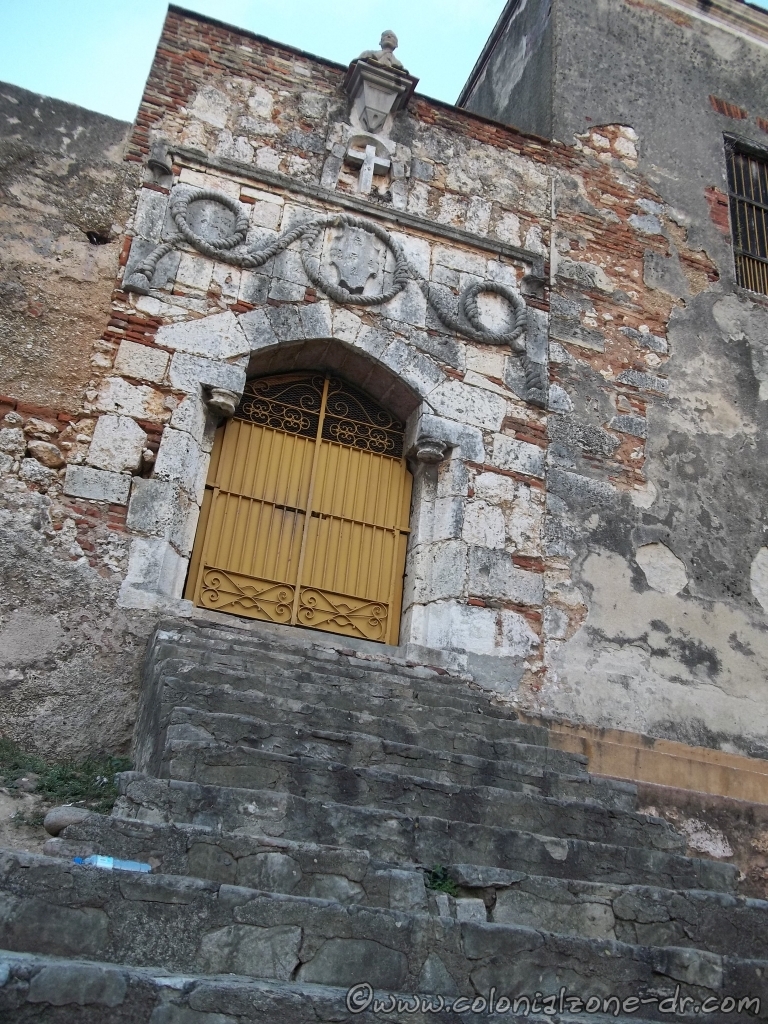
Over the largest part of the doorway of the monastery is the Cordón de la Orden Franciscana, the coat of arms of the order, carved into the stone surrounding the arched doorway. There is a cross and a bust of Padre Billini. It was built on the outside in Renaissance style and the inside in Gothic.
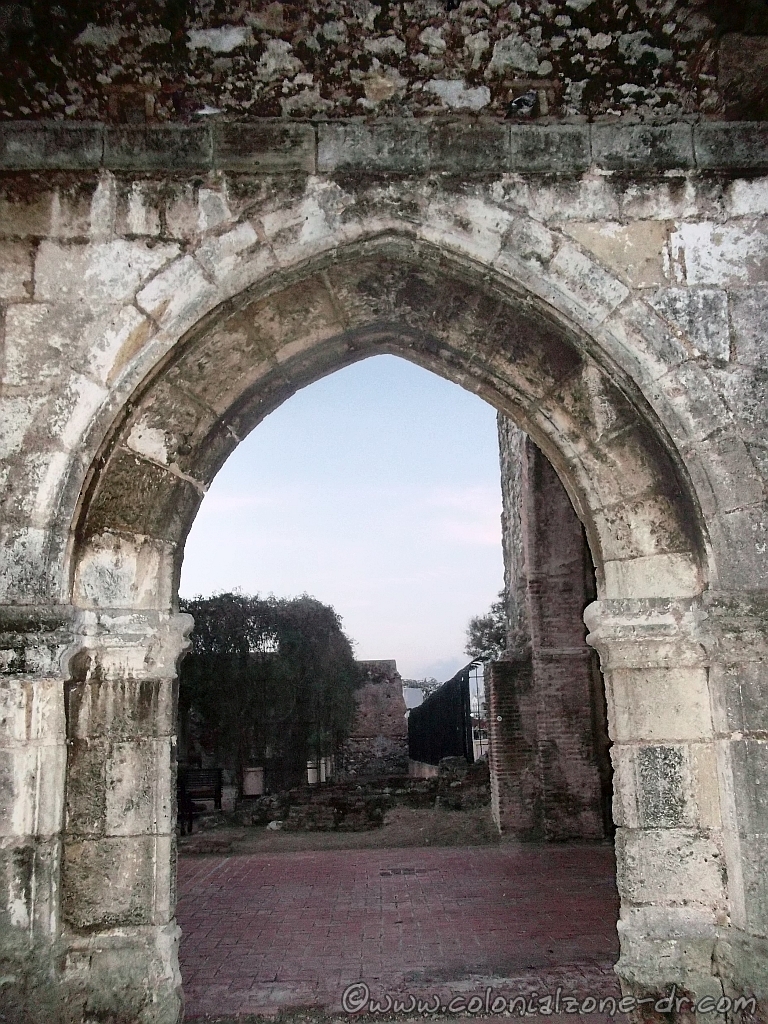
La Casa del Diablo
At one time this place was used as a military fort and named La Casa del Diablo/ The house of the Devil It has also been called El basurero del Monasterio/ The Garbage Can of the Monastery. In 1881, Francisco Billini changed the building into a lunatic asylum. If you look on the inside there are still remnants of chains bolted to the walls where they tied the crazies.
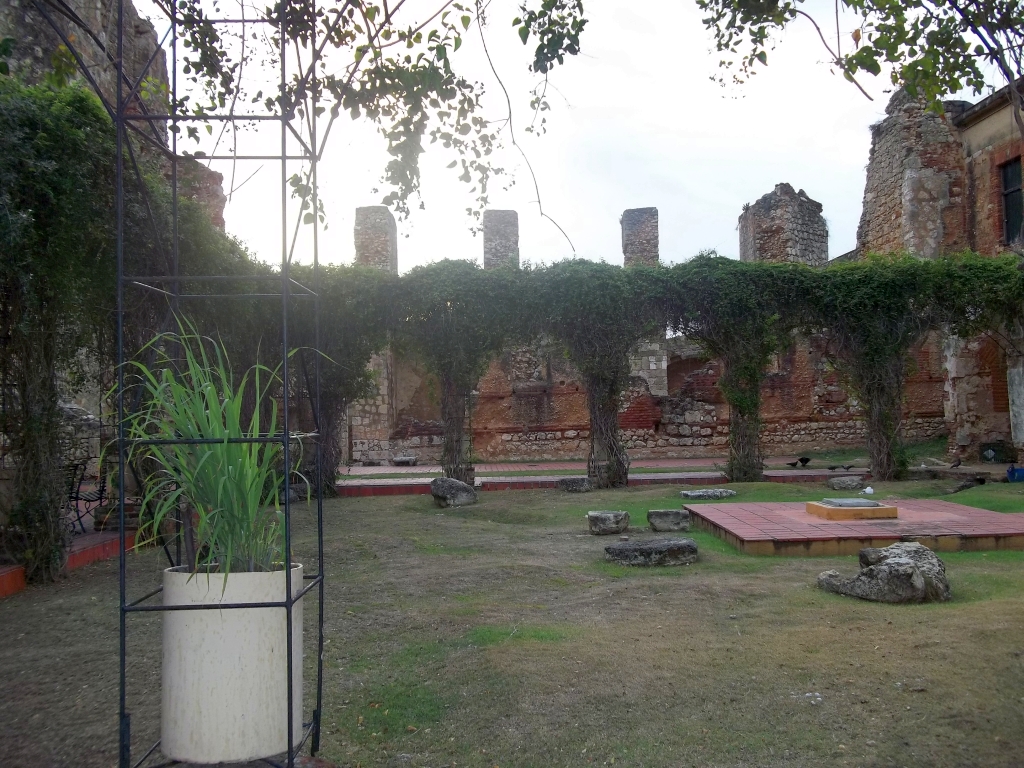
It was taken by the Pirate Francis Drake (for more information on Drake) during his very destructive raids on the city in 1586. Nature also attacked the monastery with two devastating earthquakes in 1673 and 1751.
It is also said to be where Bartholomew Columbus is buried, but this is not certain.
At times there are special events held here. There may be a concert or school group doing something. It is a favorite spot for taking wedding pictures. On Sundays the area is packed full of people all gathering with friends and family to see a free concert and do some dancing.

Capilla de la Tercera Orden Franciscana / Chapel of the Franciscan Third Order
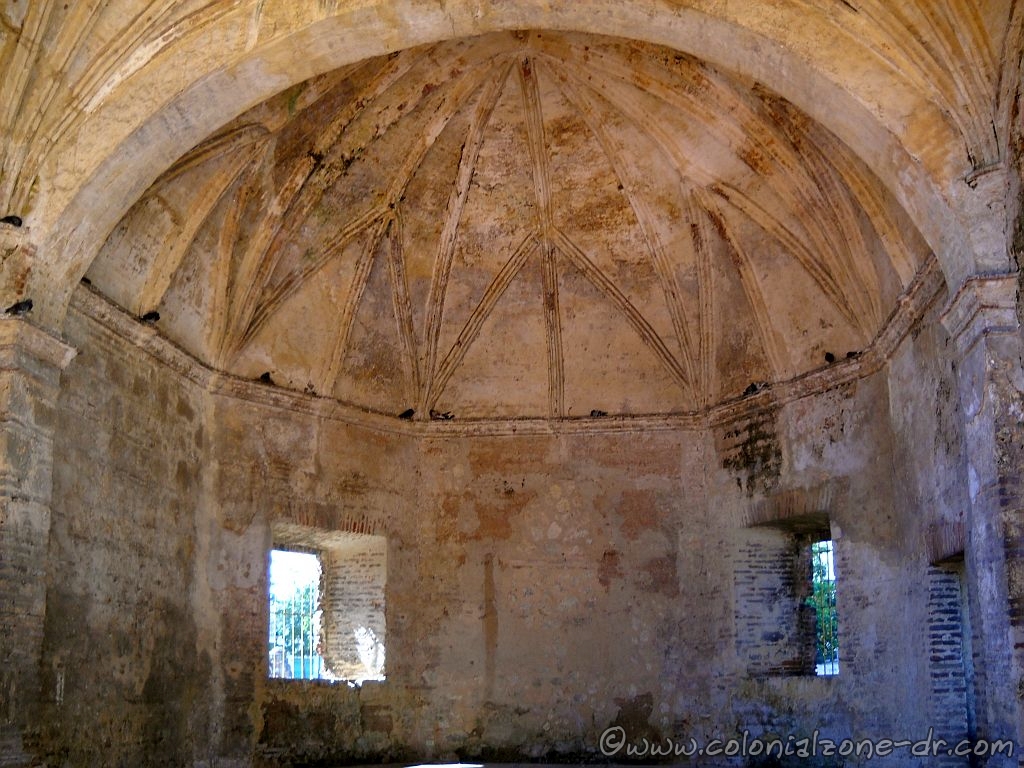
The beautiful facade of this chapel is located in the Ruins of the Monasterio de San Francisco. It was part of the many phases of building within the walls of the monastery. It was built to join with the Capilla de Garay and the Capilla María de Toledo. All that remains today is the front of the chapel and the interior arches with a small remnant of the beautiful vaulted roof that was destroyed in a hurricane is 1930.

Location
From Calle el Conde turn north on Calle Hostos. Go up the hill about 5 blocks. You can also go on Calle Restauracion, Duarte and Juan Isidro Perez (it takes up almost 2 city blocks)



